Abstract
1. For a description of some of the mechanical properties of the retractor bulbi muscle in the cat, the isometric tension development was studied in one of the four slips of the muscle and in single retractor bulbi motor units.
2. The motor units and the muscle were activated by stimulating their motoneurones of origin in the abducens nucleus.
3. All twenty-eight motor units studied were of the same fast, twitch type, which fatigued quickly. Similarities between the motor units and the muscle with regard to isometric tension development strongly suggest that the retractor bulbi is composed exclusively of this type of motor unit.
4. On an average the motor unit had a twitch rise time of 9·2 msec and a half-decay time of 11·4 msec. The twitch tension was 36·7 mg. At stimulation with 175 pulses/sec or above the tetanus fused. The maximal tetanic tension developed was 440 mg and the maximal rate of tension rise was 24·5 g/sec. To prolonged tetanic stimulation most of the units fatigued completely within 10-15 sec.
5. In a slip of the muslce similar values were obtained for contraction time, half-decay time, fusion frequency and fatigability. Tetanic tension reached 11·7 g and the maximal speed of tetanic contraction was 255 g/sec.
6. As in other extrinsic eye muscles a linear relation was found between length and tension in the activated retractor bulbi. An increase in activation induced a parallel shift in the curves to higher tension values but the slopes of the curves remained unchanged. The average slope value was 1·7 g/mm.
Full text
PDF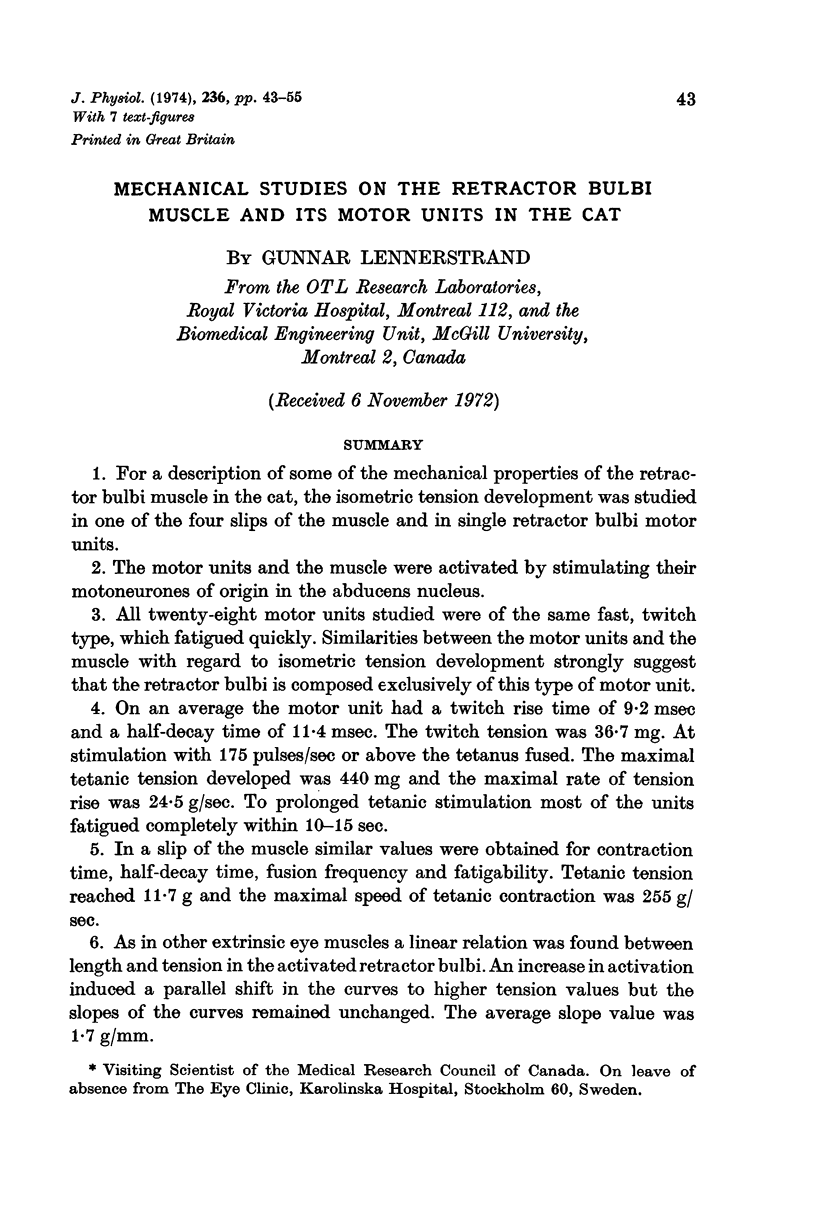
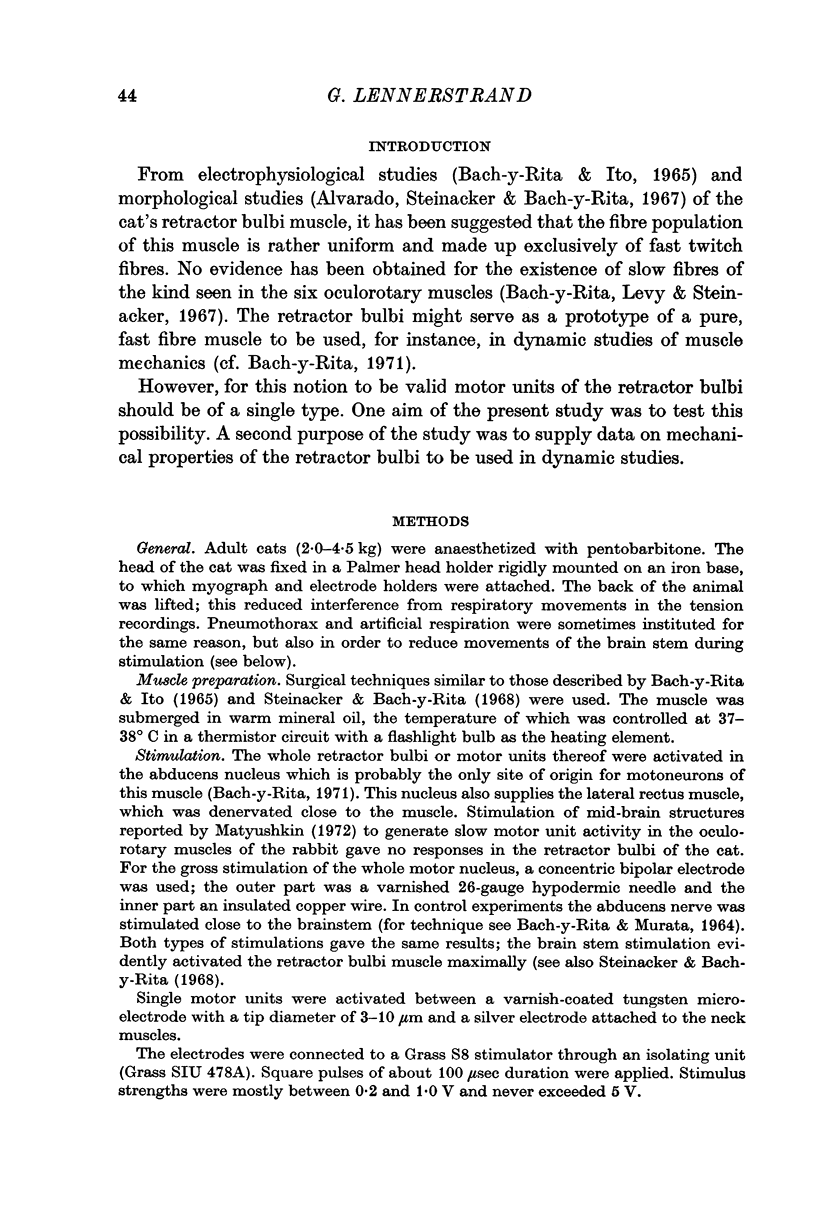

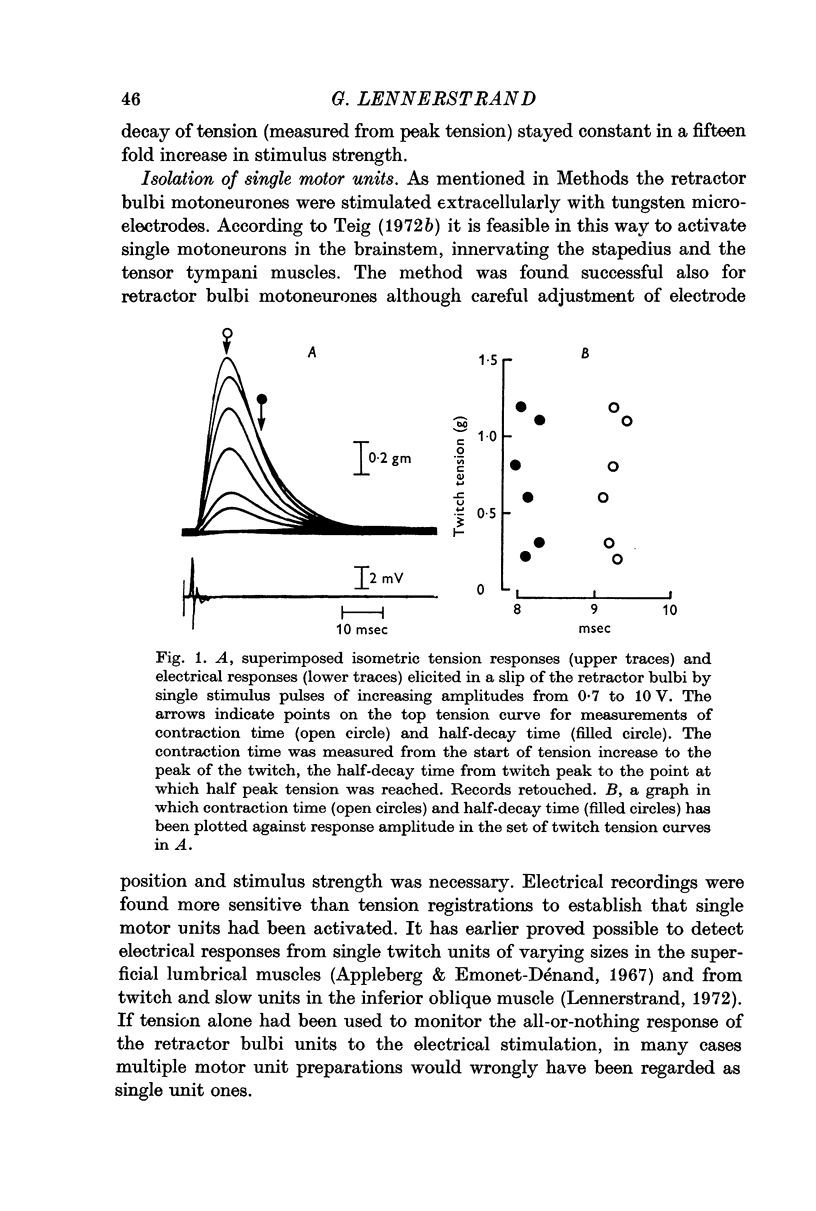
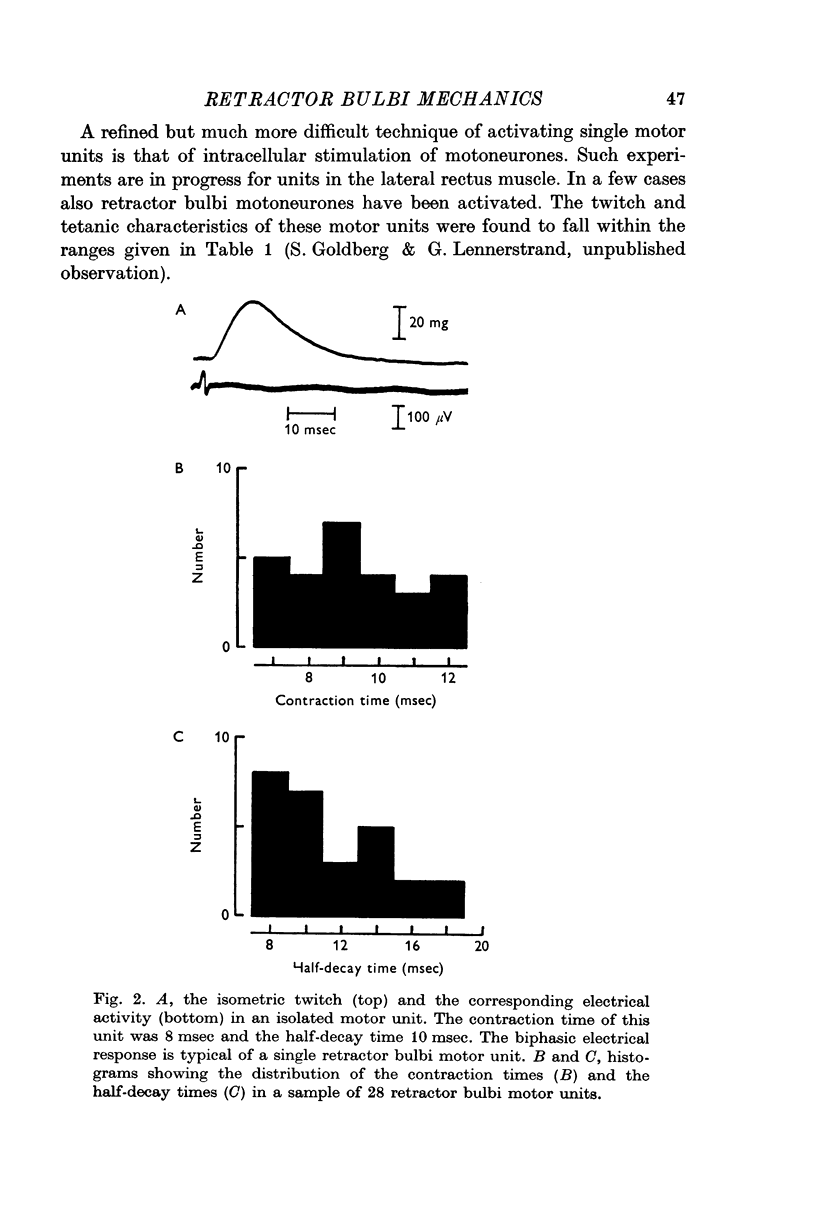
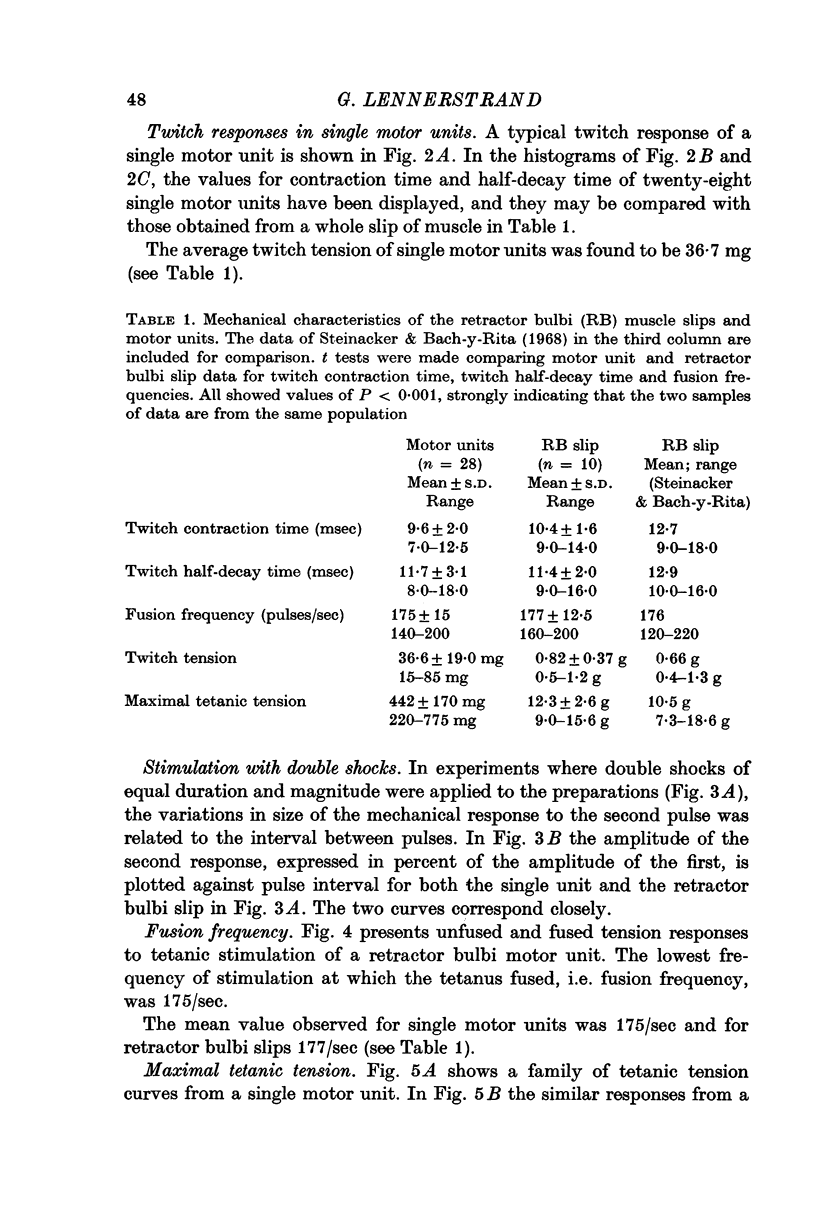
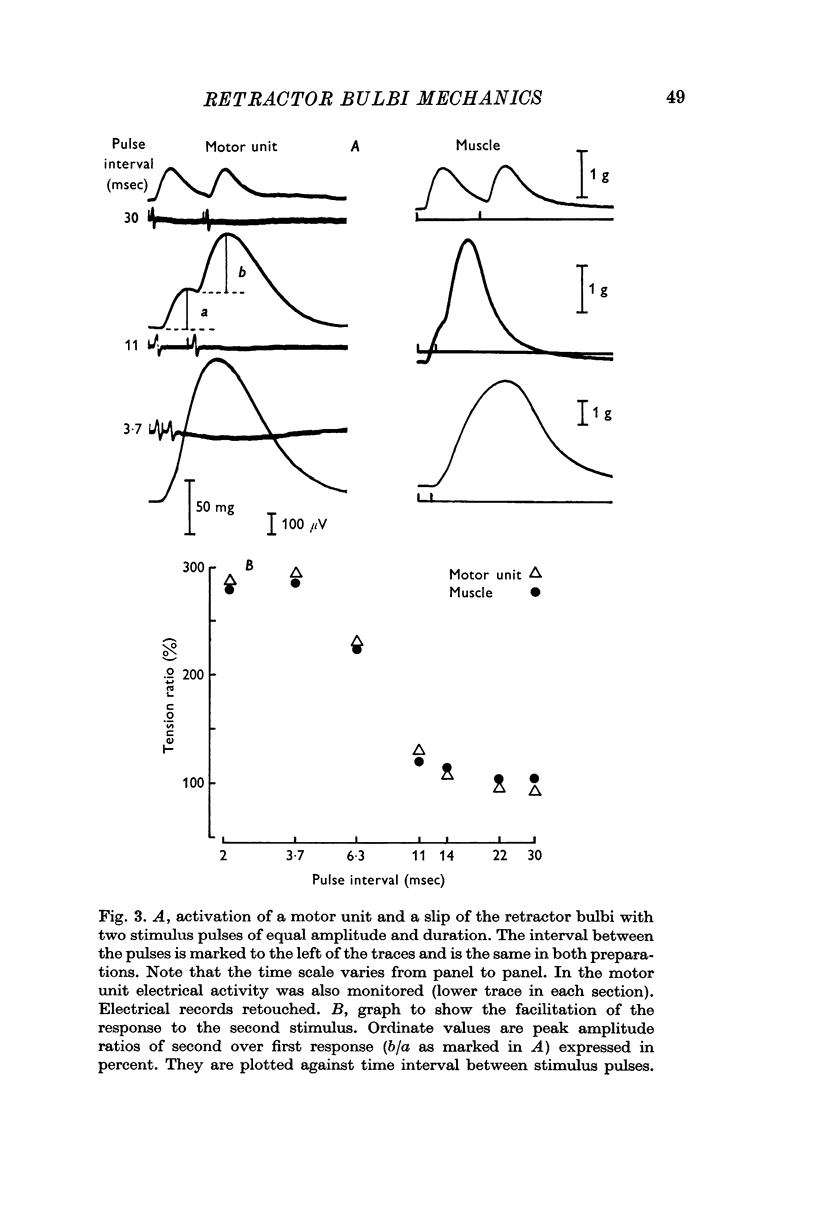
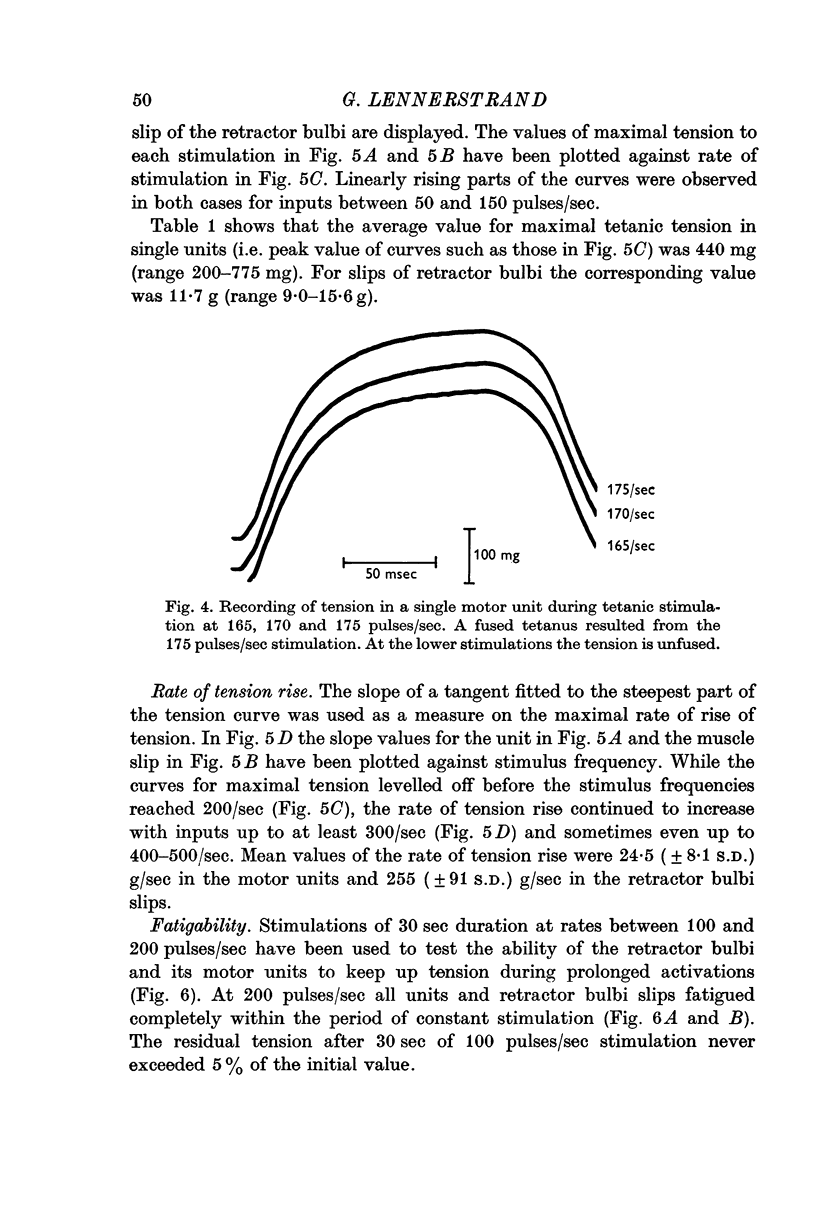
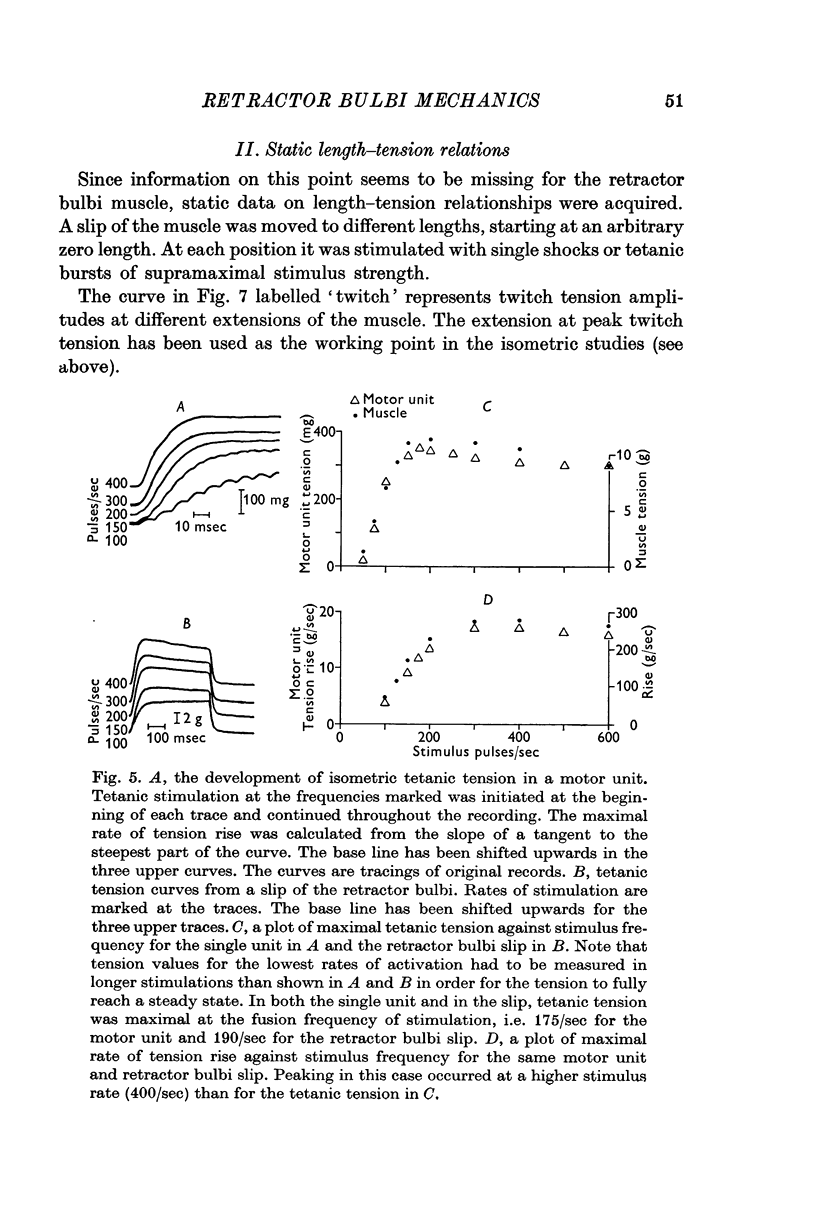
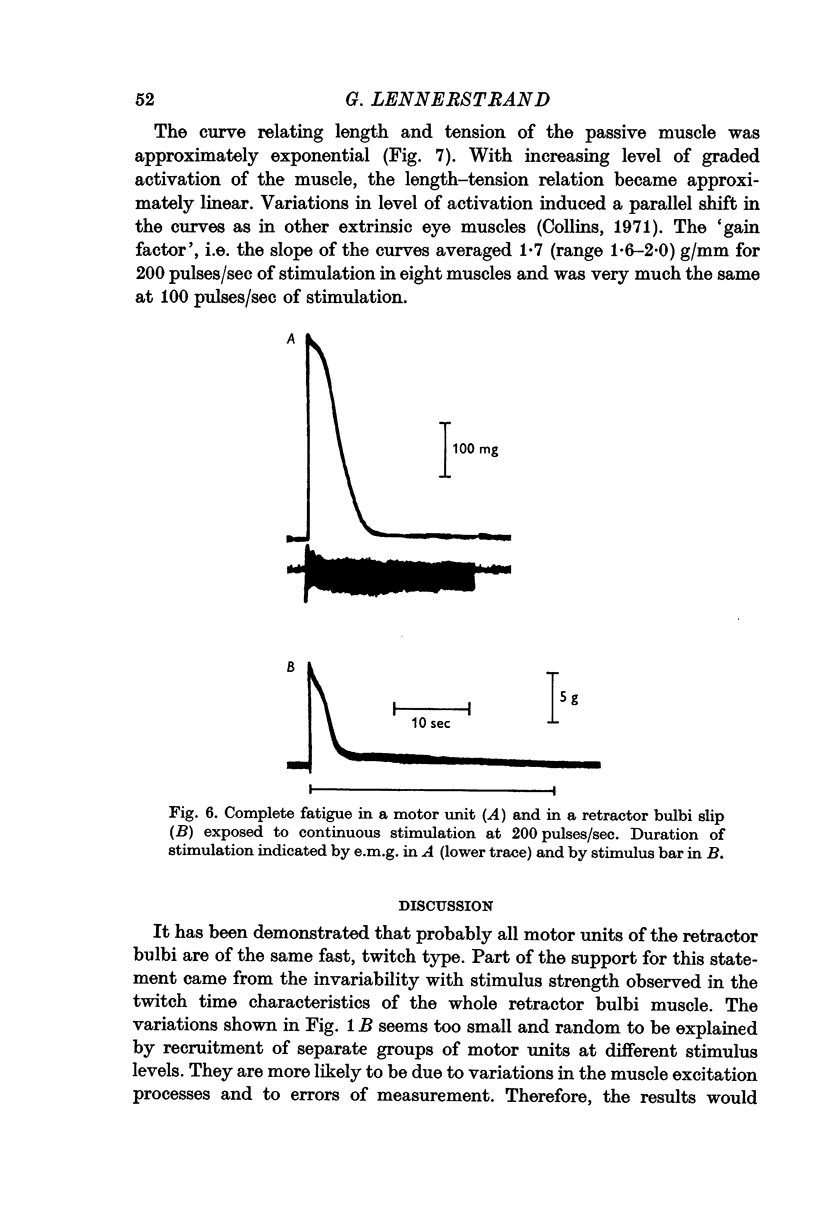
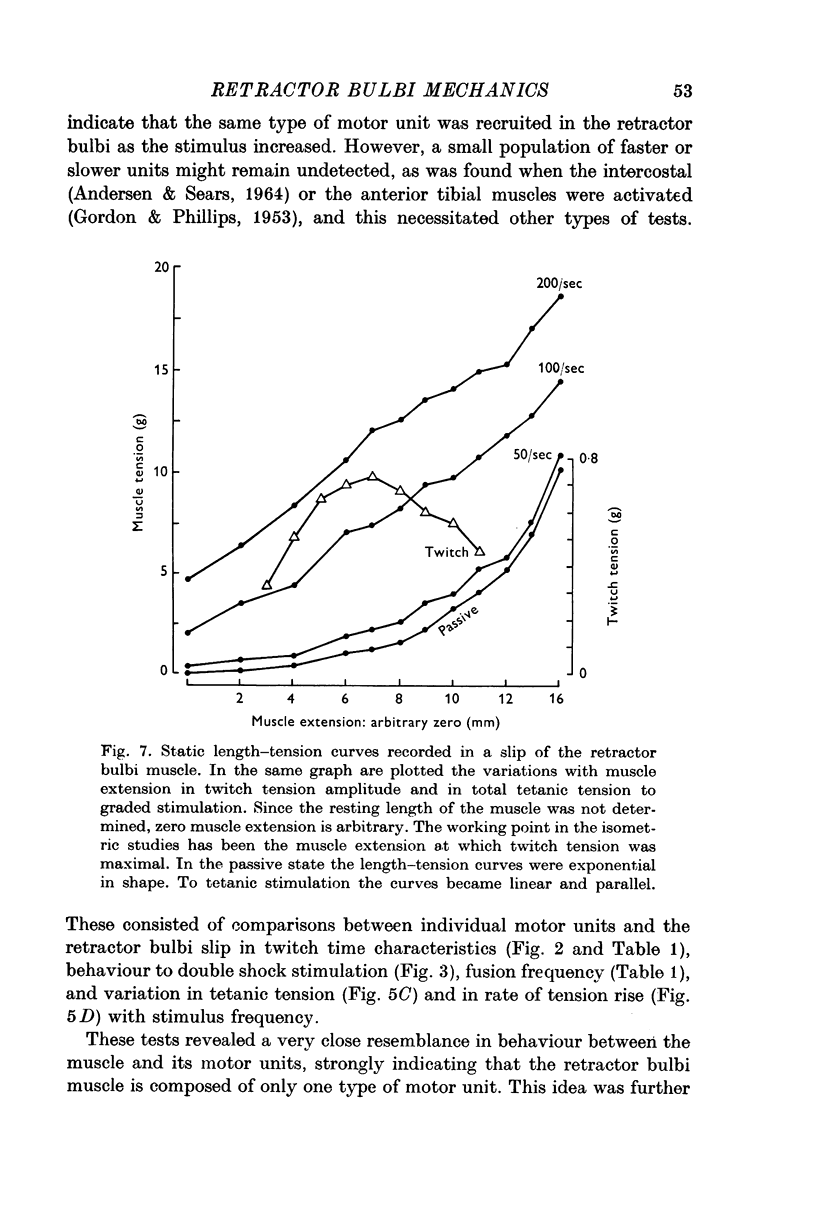


Selected References
These references are in PubMed. This may not be the complete list of references from this article.
- ANDERSEN P., SEARS T. A. THE MECHANICAL PROPERTIES AND INNERVATION OF FAST AND SLOW MOTOR UNITS IN THE INTERCOSTAL MUSCLES OF THE CAT. J Physiol. 1964 Sep;173:114–129. doi: 10.1113/jphysiol.1964.sp007446. [DOI] [PMC free article] [PubMed] [Google Scholar]
- BACH-Y-RITA P., ITO F. IN VIVO MICROELECTRODE STUDIES OF THE CAT RETRACTOR BULBI FIBERS. Invest Ophthalmol. 1965 Jun;4:338–342. [PubMed] [Google Scholar]
- BACH-Y-RITA P., MURATA K. EXTRAOCULAR PROPRIOCEPTIVE RESPONSES IN THE VI NERVE OF THE CAT. Q J Exp Physiol Cogn Med Sci. 1964 Oct;49:408–416. doi: 10.1113/expphysiol.1964.sp001746. [DOI] [PubMed] [Google Scholar]
- Bach-y-Rita P., Levy J. V., Steinacker A. The effect of succinylcholine on the isolated retractor bulbi muscle of the cat. J Pharm Pharmacol. 1967 Mar;19(3):180–181. doi: 10.1111/j.2042-7158.1967.tb08062.x. [DOI] [PubMed] [Google Scholar]
- Burke R. E., Levine D. N., Zajac F. E., 3rd Mammalian motor units: physiological-histochemical correlation in three types in cat gastrocnemius. Science. 1971 Nov 12;174(4010):709–712. doi: 10.1126/science.174.4010.709. [DOI] [PubMed] [Google Scholar]
- Edström L., Kugelberg E. Histochemical composition, distribution of fibres and fatiguability of single motor units. Anterior tibial muscle of the rat. J Neurol Neurosurg Psychiatry. 1968 Oct;31(5):424–433. doi: 10.1136/jnnp.31.5.424. [DOI] [PMC free article] [PubMed] [Google Scholar]
- GORDON G., PHILLIPS C. G. Slow and rapid components in a flexor muscle. Q J Exp Physiol Cogn Med Sci. 1953;38(1):35–45. doi: 10.1113/expphysiol.1953.sp001005. [DOI] [PubMed] [Google Scholar]
- HENNEMAN E., OLSON C. B. RELATIONS BETWEEN STRUCTURE AND FUNCTION IN THE DESIGN OF SKELETAL MUSCLES. J Neurophysiol. 1965 May;28:581–598. doi: 10.1152/jn.1965.28.3.581. [DOI] [PubMed] [Google Scholar]
- Lennerstrand G. Fast and slow units in extrinsic eye muscles of cat. Acta Physiol Scand. 1972 Oct;86(2):286–288. doi: 10.1111/j.1748-1716.1972.tb05334.x. [DOI] [PubMed] [Google Scholar]
- MCPHEDRAN A. M., WUERKER R. B., HENNEMAN E. PROPERTIES OF MOTOR UNITS IN A HETEROGENEOUS PALE MUSCLE (M. GASTROCNEMIUS) OF THE CAT. J Neurophysiol. 1965 Jan;28:85–99. doi: 10.1152/jn.1965.28.1.85. [DOI] [PubMed] [Google Scholar]
- Steinacker A., Bach-y-Rita P. A mechanical study of the cat retractor bulbi muscle. Experientia. 1968 Nov 15;24(11):1138–1139. doi: 10.1007/BF02147810. [DOI] [PubMed] [Google Scholar]
- Teig E. Force and contraction velocity of the middle ear muscles in the cat and the rabbit. Acta Physiol Scand. 1972 Jan;84(1):1–10. doi: 10.1111/j.1748-1716.1972.tb05149.x. [DOI] [PubMed] [Google Scholar]
- Teig E. Tension and contraction time of motor units of the middle ear muscles in the cat. Acta Physiol Scand. 1972 Jan;84(1):11–21. doi: 10.1111/j.1748-1716.1972.tb05150.x. [DOI] [PubMed] [Google Scholar]


